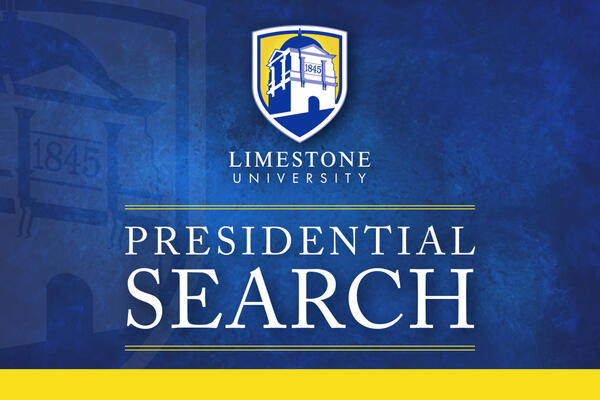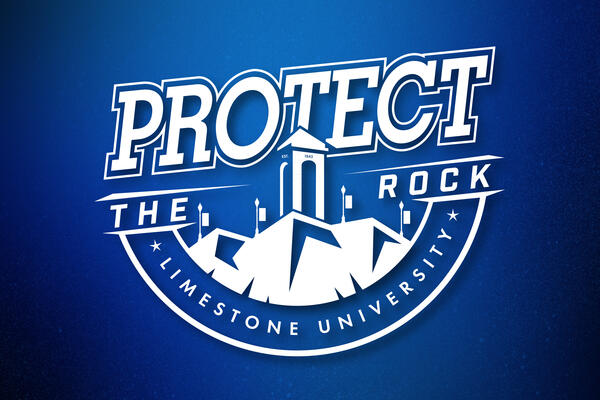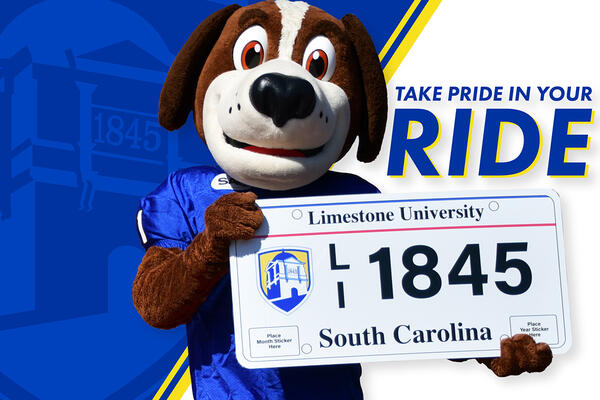December 9th, 2014
Quarry Historical Marker To Be Dedicated

Thanks to the generosity of a Limestone graduate who is now a Senior Member of the Board of Trustees, the College will dedicate a marker on Thursday, Dec. 11, to observe the historical significance of the Limestone Quarry.
Virginia Bruorton Skinner is donating the historical marker and will be on hand, along with Limestone officials and other friends of the College, for the unveiling and dedication ceremony at 11 a.m. The event will take place along Quarry Drive, which is located off Hetty Hill Street and directly behind Montgomery Hall and the Carroll Hall of Fine Arts.
Skinner is a native of Georgetown who earned her B.S. in Chemistry and minored in Physics at Limestone. She was a member of the Limestone Board of Trustees from 1998 until 2003, and returned to the Board as Senior Trustee in 2011. Skinner played an instrumental role in the restoration of the Winnie Davis Hall of History, which reopened in 2012. She will be presented with an honorary degree of Doctor of Public Service at Thursday’s commencement exercise.
The South Carolina stone placed in the Washington Monument was mined from the quarry located on the Limestone College campus.
“I would like to express our appreciation to Mrs. Skinner for providing us and our community with this historic marker,” said Limestone President Dr. Walt Griffin. “The marker recognizes the significant contributions that the quarry made in not only the College’s past, but in the history of this county and this region. The quarry now provides a lake that truly makes Limestone one of the most picturesque campuses in the nation.”
As the marker will state, deposits from the quarry furnished lime used in the production of iron during the American Revolution and throughout the 19th century. By the 1820s, the open pit was a quarry owned by U.S. Congressman Wilson Nesbitt and was on a large tract including Limestone Springs which later became a popular antebellum resort. The site was often referred to as “Nesbitt’s Quarry.”
Limestone Springs Female High School, founded in 1845, became Cooper-Limestone Institute in 1881 and Limestone College in 1898.
The Quarry was acquired by the school prior to the Civil War and was sold to pay debts in 1883. It operated until World War I, when it was closed and filled with water. It reopened in 1933 after pumping out the water, and the mining of limestone and the production of lime continued until the deposits there were exhausted in 1953. The quarry, since filled with water, was listed in the National Register of Historic Places in 1986.
According to the South Carolina Department of Archives and History, Limestone Quarry is the most extensive and best preserved limestone quarry directly associated with early iron production in the northwestern Piedmont of South Carolina. It is the only remaining limestone quarry with any contextual integrity. Since quarrying activity ceased in the early part of the twentieth century, it was not exploited by modern mining methods. That lack of large-scale mining activity has been the principal reason this quarry, unlike the others, has retained much of its integrity.
The Limestone Quarry site covers approximately 30 acres and has exposed vertical faces of limestone visible at the edges. It is the largest body of limestone in a series of deposits which trend northeast-southwest and extend in a linear fashion from Limestone College to across the South Carolina state line.
In regard to the stone used in the Washington Monument, according to noted historian and Cherokee County native Dr. Bobby G. Moss, after the laying of the cornerstone of the monument on July 4, 1848, each state in the Union was invited to contribute a memorial stone of material representative of its geographical boundaries. South Carolina was among the first states to respond. Before offering a stone from Limestone Quarry, Dr. Thomas Curtis ordered a rectangular stone be cut from the quarry and roughly dressed. The block was cut from the rock near the surface of the ground at the western end of the site near where the water now drains from the quarry.
When Governor G.B. Seabrook made his annual report to the General Assembly November 26, 1850, he stated: “In the spring of last year (1849), the Reverend Thomas Curtis, of Limestone Springs, tendered me a rough and massy body of Granite from the quarry owned by him, with a request that it should represent South Carolina in the Monument, in the course of erection at the Federal Capital, to the ‘Father of his Country.’ I subsequently caused it to be conveyed to Columbia, where it was converted into a block of the necessary size (four feet by two feet), adorned with the arms of the State, and otherwise furnished in a style that has commanded universal commendation.”
According to Dr. Moss, the Governor, who was not a geologist, incorrectly identified the stone, which was actually Gaffney Marble.



